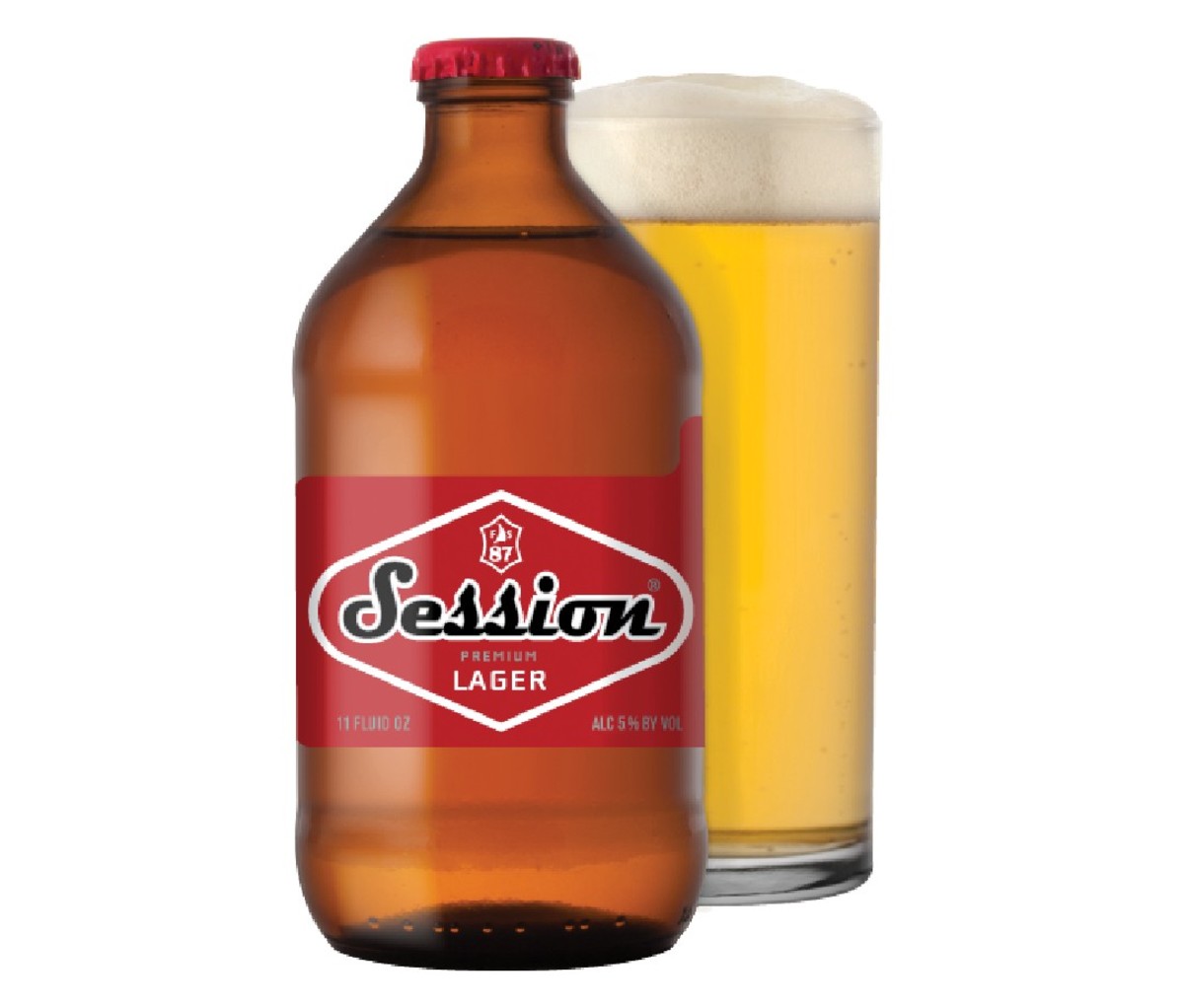It’s easy to overlook ergonomics when drinking a beer. That IPA’s taste and aroma might be front and center, but the drinking vessel is essential to the experience. Is it a clean pint glass? A crumpled 16-ounce can? If luck shines down, you’ll be drinking that beer from a stubby bottle. Stubbies, the classic, squat brown vessel, are the perfect size for a palm—deceivingly packing the usual 12 ounces of beer (or, occasionally, a Spinal Tap-inspired 11).
But unlike a common longneck bottle, the stockier glass feels more substantial, a nod to a bygone era of thoughtful beer-receptacle craftsmanship. And here begins the story of stubbies.
Emerging from Prohibition in the 1930s, breweries began experimenting with different packaging formats to deliver beer to thirsty drinkers. Gottfried Krueger Brewing of New Jersey sold America’s first canned beers to the public in 1935, ushering in our entrenched era of canned suds.
Not to be outdone, the glass industry responded by rolling out squat, sturdy, can-like shortneck bottles that were easy to stack and ship. Milwaukee’s Joseph Schlitz Brewing Company, makers of Schlitz lager, pioneered the practice with the introduction of its so-called “steinie” bottle, due to its resemblance to a beer stein. Bottles with stubbier necks got the “stubby” label.
The rise, fall, and rise again of stubbies
The low-rise bottles ruled until the 1950s, when bottle necks grew longer, slimmer, and increasingly commonplace. As the lager-loaded longneck entered its reign alongside cans, stubbies abdicated from store shelves—except (interestingly) up in the beer-loving North. In Canada, stubby bottles stubbornly held on for decades, remaining standard until the early 1980s, when a marketing-inspired shift to the taller, slimmer “American” bottles led to at least one fruitless, patriotism-fueled “Bring Back the Stubby” campaign.
Thankfully, all stubbies didn’t end up in the historic landfill. Today, breweries both big and small are embracing the nostalgia-fueled bottle—a point of packaging differentiation in a world full of whimsically labeled 16-ounce cans. Stubbies today are filled with throwback lagers, as well as modern IPAs dolled up with the latest hops.
Here are five glass acts that are great to grip and drink.

1. Full Sail Brewing Co. Session Premium Lager
ABV: 5%
The West Coast was once awash in stubby bottles filled with lagers such as California’s Lucky and Seattle-born Rainier. The format was essentially extinct until 2005 when Hood River, Oregon-based Full Sail packaged a full-flavored lager—the kind you might’ve found in pre-Prohibition America—in stubby 11-ounce bottles. Session Premium has since launched a line of Session beers sold in stubbies, including a hefeweizen and a hazy IPA.
[$13, 12-pack; fullsailbrewing.com]
Get it
2. Desnoes & Geddes Red Stripe
ABV: 4.7%
First brewed in 1928, the classic Jamaican lager entered its iconic stubbies phase in 1965 and soon became a Caribbean vacay drinking institution. To this day, a cold, grippable Red Stripe goes great with hot jerk chicken and good times. Bottled Red Stripe is still brewed right in Jamaica. Meanwhile, its canned and drafted offshoots are now produced in the Netherlands.
[$8, 6-pack; redstripebeer.com]
Get it
3. Switchback Brewing Co. Switchback Ale
ABV: 5%
Vermont is synonymous with hazy IPAs, but the state’s best-selling draft beer is its unfiltered Switchback Ale. The style-defying amber ale, rich in malt and redolent of fruit thanks to the brewery’s custom yeast strain, is an ideal fit for a stubby. Natural bottle conditioning (aka “refermentation”) creates a gentle fizz from first to final sip.
[$10, six-pack; switchbackvt.com]
Get it

4. Molson Coors Beverage Company Coors Banquet Beer
ABV: 5%
Coors emerged from Prohibition with a bang-up idea: Why not package its popular lager, nicknamed “banquet beer” by Colorado miners, in stubby bottles? The Colorado mega-brewery-to-be first used stubbies in 1936, the label announcing the lager was “thoroly aged”—a whimsically simplified spelling that never stuck. Or did it? Coors revived stubbies in 2013, reviving the “thoroly aged” tag on its commemorative packaging.
[$13, 12-pack; coors.com]
Get it
5. Veza Sur Brewing South Coast IPA
ABV: 7.5%
Latin American culture and culinary traditions inspire the beers of Miami’s Veza Sur, where horchata-inspired cream ales are brewed alongside guava-infused sour ales and the ToronjIPA that’s packed with grapefruit. The brewery (owned by AB InBev) also packages many of its beers as stubbies, including a must-try sunny South Coast IPA that stars citrusy Amarillo and tropical Citra hops.
[$13, 6-pack; vezasur.com]
Get itfrom Men's Journal https://ift.tt/3m38S9Y




0 comments